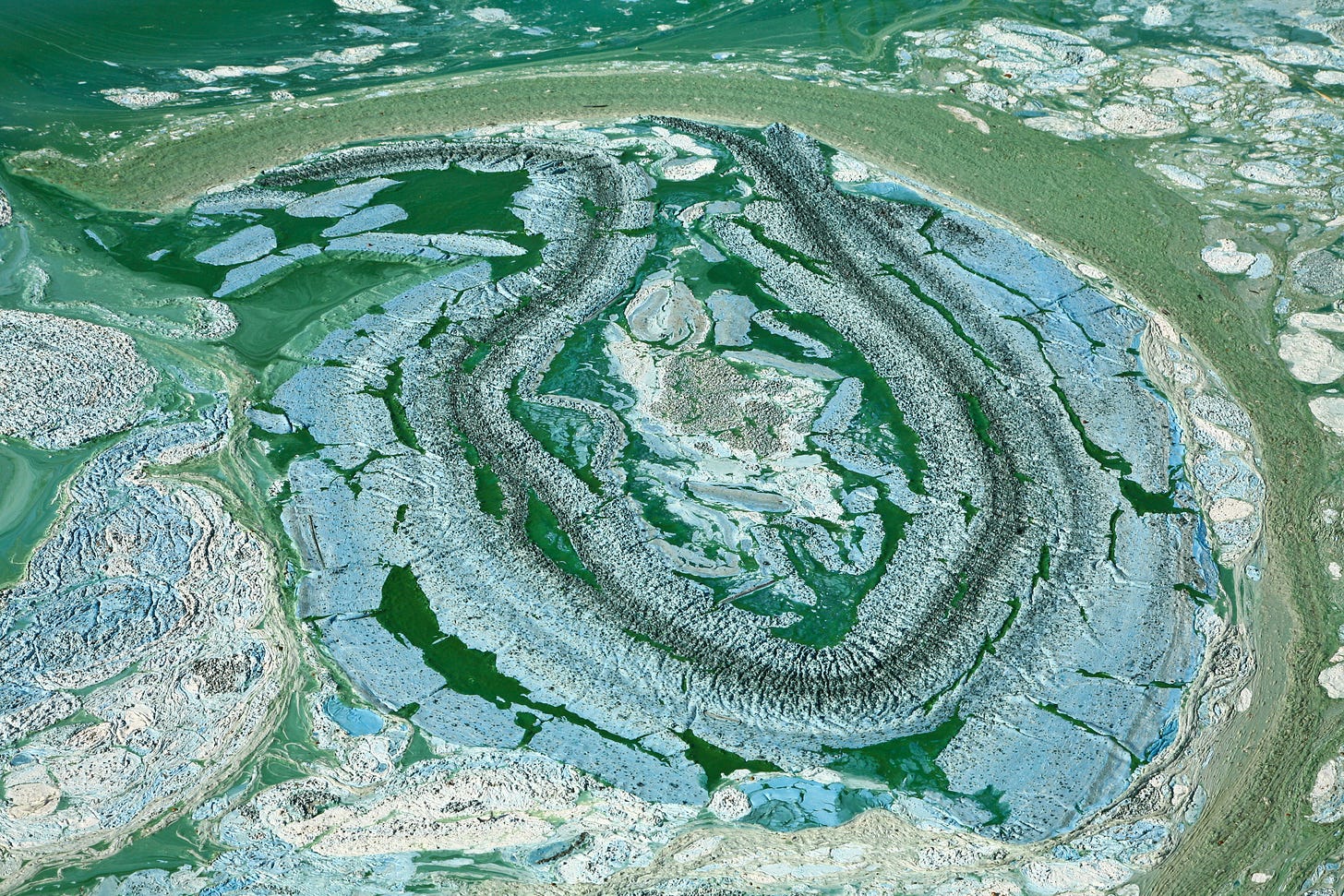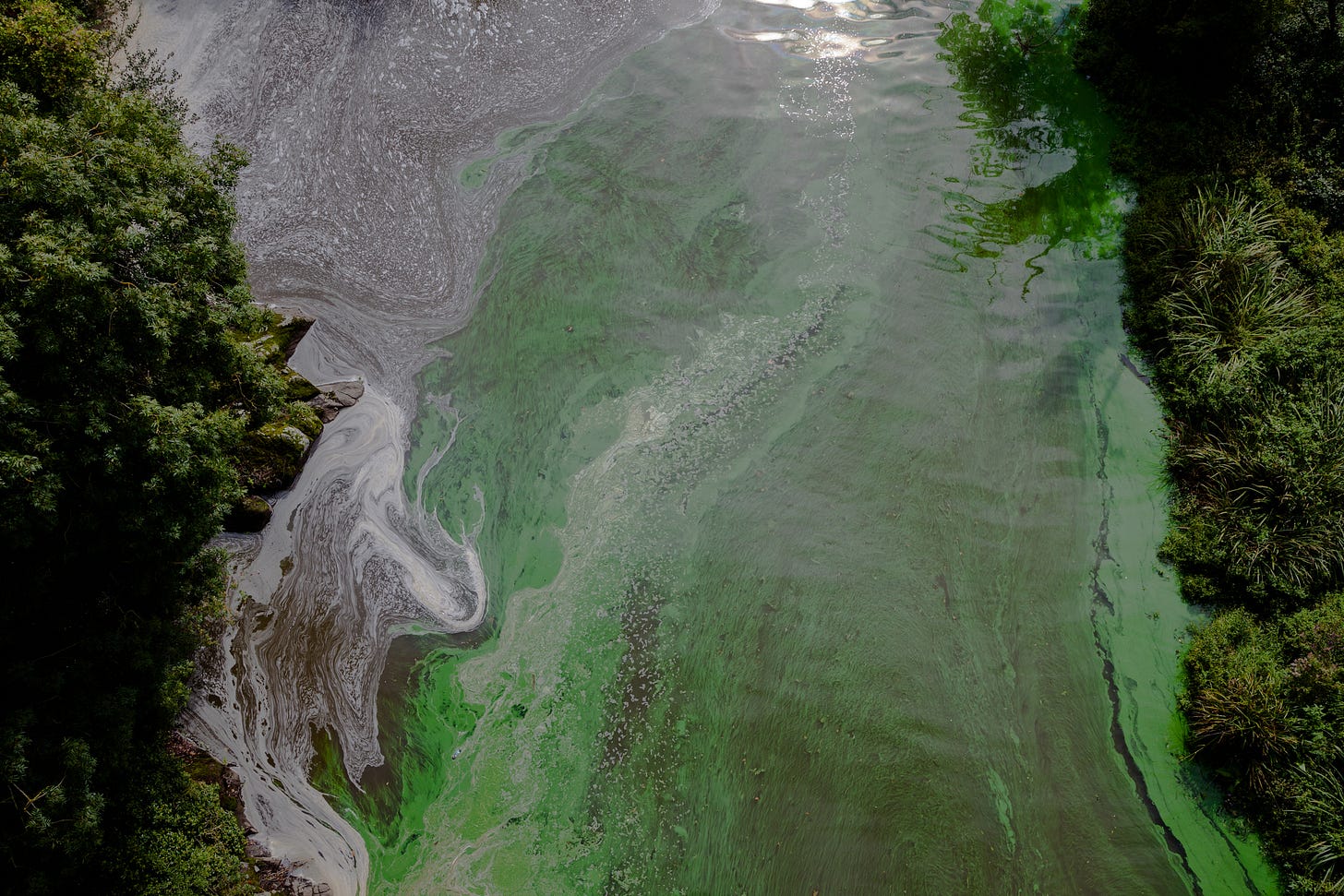Food Systems, We Have A Fertiliser-Induced Problem!
It might be known as “laughing gas” but the impacts are far from funny
Let’s start with a couple of good news for a change.
1. The UK has a new government! Let’s hope this one will have fewer chancers, grafters, liars, bigots, and entitled millionaires, and take back leadership on climate action.
The rise of Reform gives me pause, and I still think first-past-the-post is a really crappy system. But there are four Green MPs now and I’m going to savour this.
2. On a personal note, I passed my Italian A2 language test! Woop!
It’s all the more sweeter because I took it during what became one of the most stressful two-moth periods of my life, where a combination of work deadlines, a prolonged and terrible cough, life admin, and the fallout from having my backpack stolen in London all came together to nearly overwhelm me. Each problem was anxiety-inducing on its own; when taken together, it was suffocating.
But I survived and now have reminders of what I can overcome. More importantly though, the experience taught me about not trying to do everything, all the time.
Now, back to regular programme.
Agriculture emits three key greenhouse gases that contribute directly to climate change: Carbon dioxide (CO₂), Methane (CH₄), and Nitrous oxide (N₂O).
Much has been written bout the former two, particularly in relation to the use of fossil fuels in our farming systems, which release CO₂, and livestock’s contribution to CH₄, which is 28 times more potent than CO₂ and usually accounts for the bulk of agricultural GHGs.
N₂O, also known as “laughing gas” and the main man-made substance damaging the planet’s protective ozone layer, often attracts the least attention, despite being nearly 300 times more potent than carbon dioxide.
The three have different lifespans. CO₂ hangs around in the atmosphere for between 300 to 1,000 years, N₂O for more than 110 years, and CH₄ for a much-shorter 12 years.
Nothing to laugh at
In June, a paper published in the peer-reviewed Earth System Science Data has warned that N₂O emissions have grown 40% between 1980 and 2020, greatly accelerating climate change and threatening efforts to keep global warming to internationally agreed limits.
Worse, growth rates over the past three years (2020-2022) have been higher than any previous observed year since 1980 when reliable measurements began, and about 30% higher than in the past decade, said the Global Nitrous Oxide Budget.
“The current growth rate of atmospheric N₂O is likely unprecedented to the ice core records of the past 800 000 years,” it said.
The results “show that N₂O emissions are accelerating faster than at any other time in human history and have surpassed even the most pessimistic greenhouse gas projections used by the IPCC,” added a press release from NOAA Research, one of whose scientists co-authored the study.
P.S. NOAA Research is a division of the National Oceanic and Atmospheric Administration, a U.S. federal agency, and IPCC stands for The Intergovernmental Panel on Climate Change, the leading international body assessing the science related to climate change.
Background of the study
This is the most comprehensive assessment to date of N₂O. It is also an update to a prior assessment published in 2020 that covered 1980-2016, about which I wrote a news piece.
It looked at all the human and natural processes that produce and consume N₂O and how those processes have changed over time.
The new version looks at data from 1980 to 2020, divides global land into 18 regions, and provides a more detailed breakdown of each.
Both were produced by by the Global Carbon Project, an international research effort that includes scientists from all over the world. This study had 58 contributors from 55 organisations across 15 countries.
It’s a pretty technical paper, heavy in scientific terms and numbers, so I had to read it a couple of times and am thankful for the different press releases and materials that helped me make sense of it.
What’s causing the increase?
Unsustainable practices in global food production and growing food demand, particularly the use of nitrogen fertilisers and animal waste on croplands.
Growing demand for meat and dairy products and increased nitrogen fertilisers used in the production of animal feed are also drivers.
In 1980, the world’s farmers used 60 million metric tons of commercial nitrogen fertilisers. That number jumped to 107 million in 2020. At the same time, animal manure production increased to 101 million metric tons of nitrogen in 2020, from 80 million in 1980, the authors said in briefing materials provided to journalists.
Agricultural production accounted for 74% of human-driven nitrous oxide emissions in this period. Aquaculture, which emits about a-tenth of the use of chemical fertilisers on land, is also growing rapidly, particularly in China.
Other direct sources, including emissions from fossil fuel and industry, biomass burning, and waste and wastewater, “did not show a significant trend”. Land use change also emits nitrous oxide, but in the period studied, it didn’t make major contributions.
What does N₂O do?
“On Earth, excess nitrogen contributes to soil, water, and air pollution. In the atmosphere, it depletes the ozone layer, and exacerbates climate change,” said the Center for Environmental Science at the University of Maryland.
In short, the unabated increase of N₂O is an extremely worrying trend.
If we want to rein in the increasingly erratic weather patterns, we need to significantly reduce the emissions of all three GHGs, including N₂O.
“For net-zero emission pathways consistent with the Paris Agreement (stabilising global temperatures below 2°C from pre-industrial levels), anthropogenic N₂O emissions must decline by at least 20% relative to 2019 levels by 2050,” Hanqin Tian, the study’s lead author, told me via e-mail.

Who are the highest and lowest emitters?
The top five emitters by volume in 2020 were China (16.7%), India (10.9%), USA (5.7%), Brazil (5.3%), and Russia (4.6%).
The top five per capita emissions (Kg N₂O/person) are 3.3 (Russia), 2.5 (Brazil), 1.7 (USA), 1.3 (China) and 0.8 (India). Per capita emissions are influenced by both domestic consumption and trade of food/products.
Developing countries in Africa, South Asia, and Southeast Asia show a significant increase in nitrogen fertiliser use, albeit coming from low values. For example, in Pakistan and Ethiopia, emissions have increased by over 200%.
In the U.S., agricultural N₂O emissions increased but other sectors have decreased, so the overall picture has been stable.
In Brazil, direct emissions from the use of fertilisers and manure have more than doubled.
Europe, once the top emitter at nearly 24% of emissions, has seen the largest reductions, but mostly as a result of reduced fossil fuel and industry emissions. Direct and indirect agricultural emissions also declined during 1980–2020 but the decreasing trend in direct agri emissions had levelled off by the 2000s.
Russia also saw a drop in total emissions. This happened during the 1990s due to the collapse of the Soviet Union. While they have not fully returned to previous levels, emissions from fertiliser use and manure have since increased.
Australasia, and Japan and Korea, are two other regions that have seen decreases.
What can be done to curb these emissions?
It’s impossible to completely cut agricultural N₂O emissions but there are a few options that could significantly reduce them, experts said. It requires “a combination of policy interventions, technological innovation and individual actions,” said the study’s lead author, Hanqin Tian. He gave a few examples:
Policies can encourage farmers to adopt nitrogen-efficient practices, optimise fertiliser use and reduce N₂O emissions and other forms of nitrogen pollution through a variety of incentive programs.
Precision agriculture techniques, including the use of remote sensing and satellite GPS-guided equipment, can help farmers vary the rate of fertiliser applied to optimise nutrient management and minimise nitrogen losses, thereby reducing N₂O emissions.
The development and adoption of nitrogen-efficient fertilisers, such as controlled-release formulations and nitrification inhibitors, also offer promising ways to reduce nitrogen runoff and curb N₂O emissions from agricultural soils.
Innovations in livestock management, such as dietary supplements and improved waste management practices, can reduce the amount of N₂O from cattle.
Industries, particularly production of nylon and fertilisers, can install existing, affordable technologies to abate nearly all of their N₂O emissions. That's an easy win. Most of the world has already done so, leaving China and the U.S. responsible for most of the remaining industrial emissions of N₂O.
Consumers can also make plant-based foods a larger fraction of their diets. You don't need to become vegan, but reducing the frequency and portion sizes of meat and dairy consumption can be healthy for both you and the environment. Eco-friendly practices like composting food wastes and reducing fertiliser use on lawns also help.
Some also say the use of alternate crops with species that have natural N₂O inhibitors could help. Two years ago, I wrote about a study that suggested breeding crops that suppress nitrous oxide emissions could also boost yields and save land.
You can read that issue here, but if you don’t have time/inclination, here’s what it said in a nutshell.
Staple crops such as rice, wheat, maize and sorghum have a trait called biological nitrification inhibition (BNI), although the high-yielding varieties of these grains we grow and consume the most today may either have no BNI or the trait may be weak.
However, there are either wild species of these staples or little used varieties that have stronger BNI traits that can be transferred to the ones we are now eating through normal crop breeding. Researchers have done that to wheat, without using genetic engineering.
When it comes to cutting N₂O emissions, reduction is all the more crucial because unlike CO₂, no technologies are available or currently in development capable of removing N₂O directly from the atmosphere, according to scientists.
Thin’s Pickings
How the Chevron ruling could change food policy - Food Fix
If you think the ruling only had implications for environmental policy in the U.S., think again. Lauren Ng, Food Fix’s editorial assistant, spoke to food law experts on what it could also mean for issues like strengthening competition laws. In short, it’s not good.
Night of the living dead - Heated
Arielle Samuelson and Emily Atkin on Joe Biden’s debate night debacle and the “unfair standard” where one speaker can just sprout bullshit confidently while the other had to use the right numbers, include important context, and make nuanced points.
“I see this unfairness all the time in the climate change “debate.” Deniers and delay artists have it so easy. If I could simply make up stuff all day, I’d be great at sound bites too.” I feel you, sisters.
As always, please feel free to share this post and send tips and thoughts on mastodon @ThinInk@journa.host, my LinkedIn page, twitter @thinink, or via e-mail thin@thin-ink.net.




